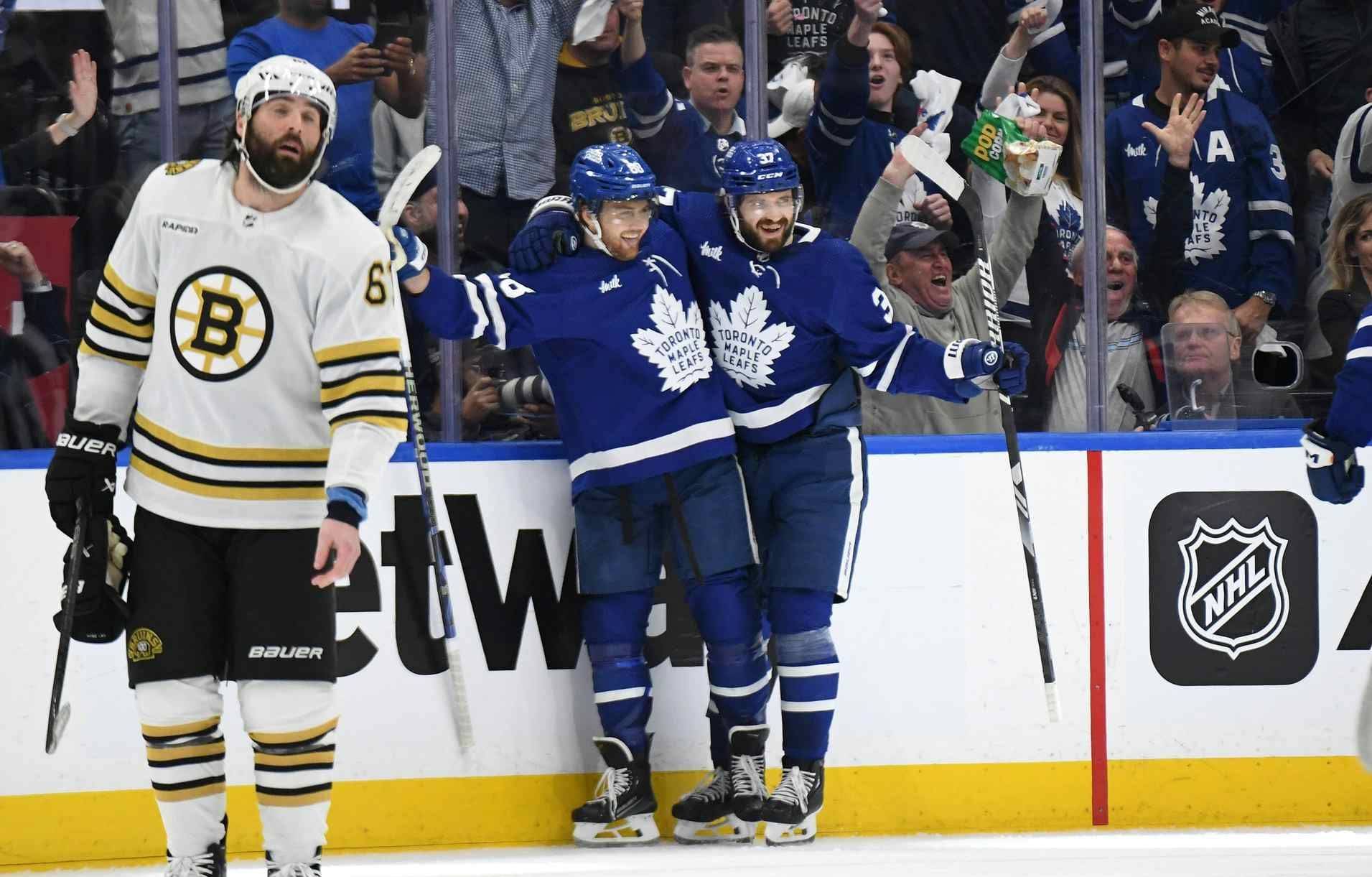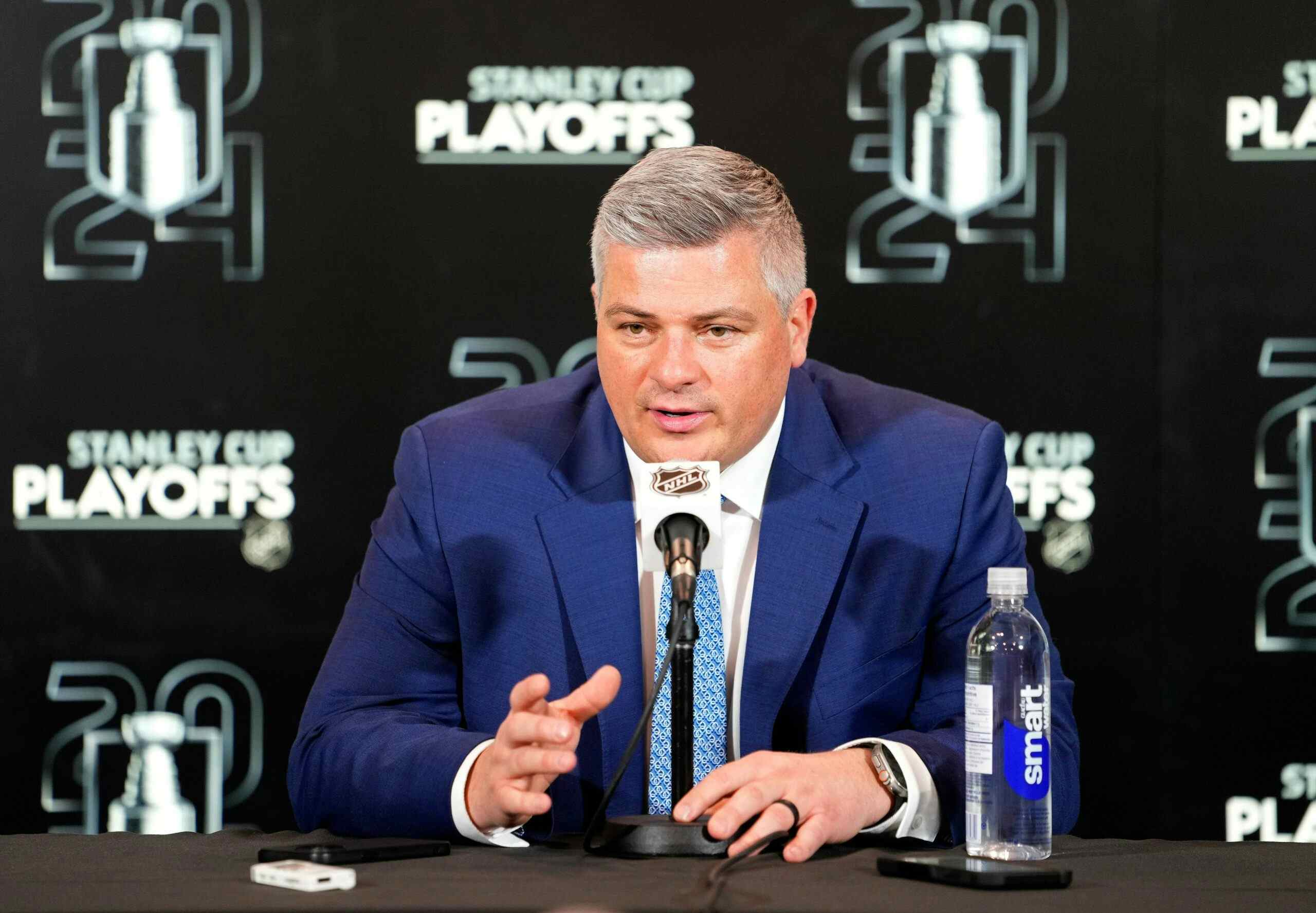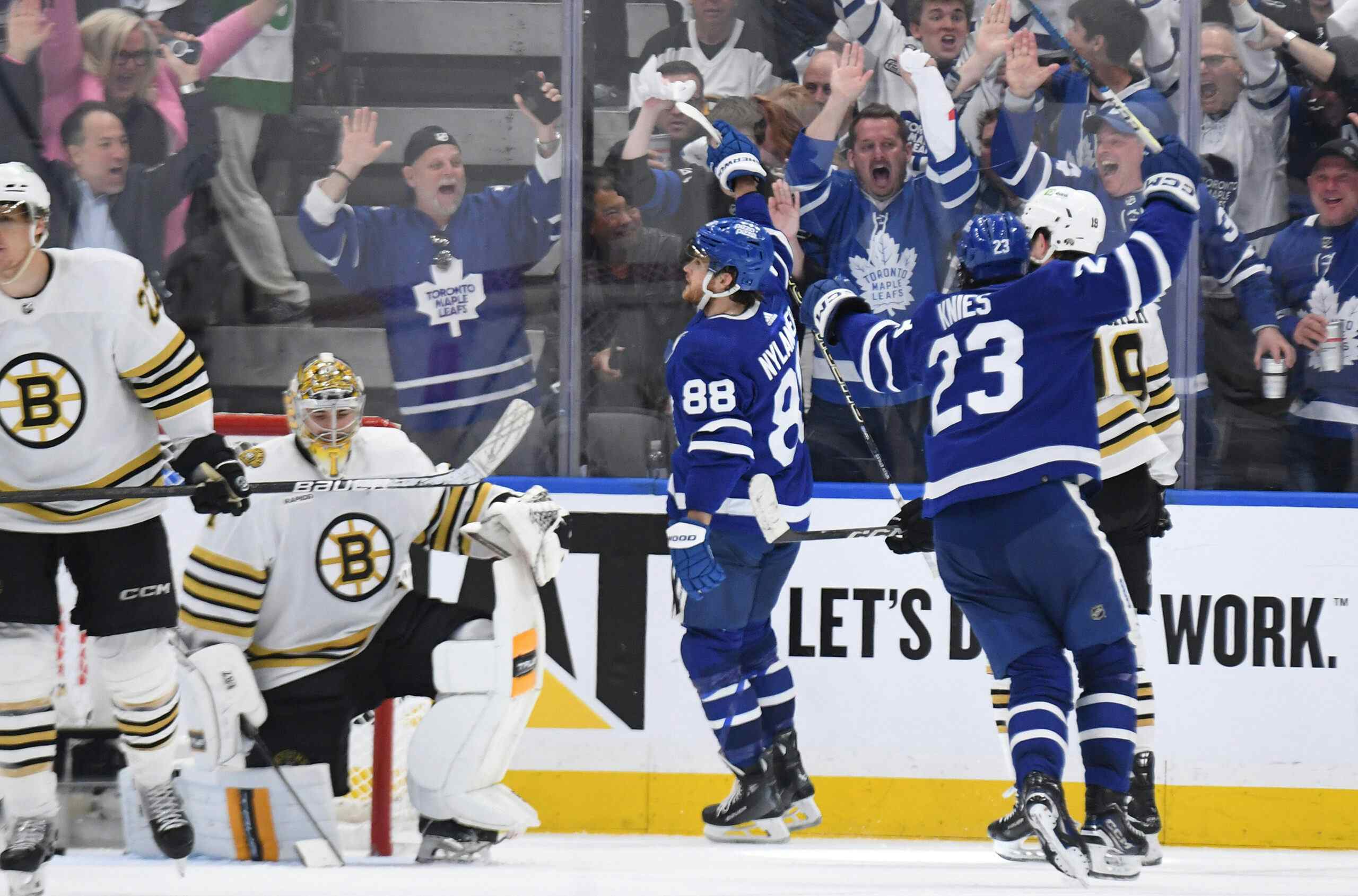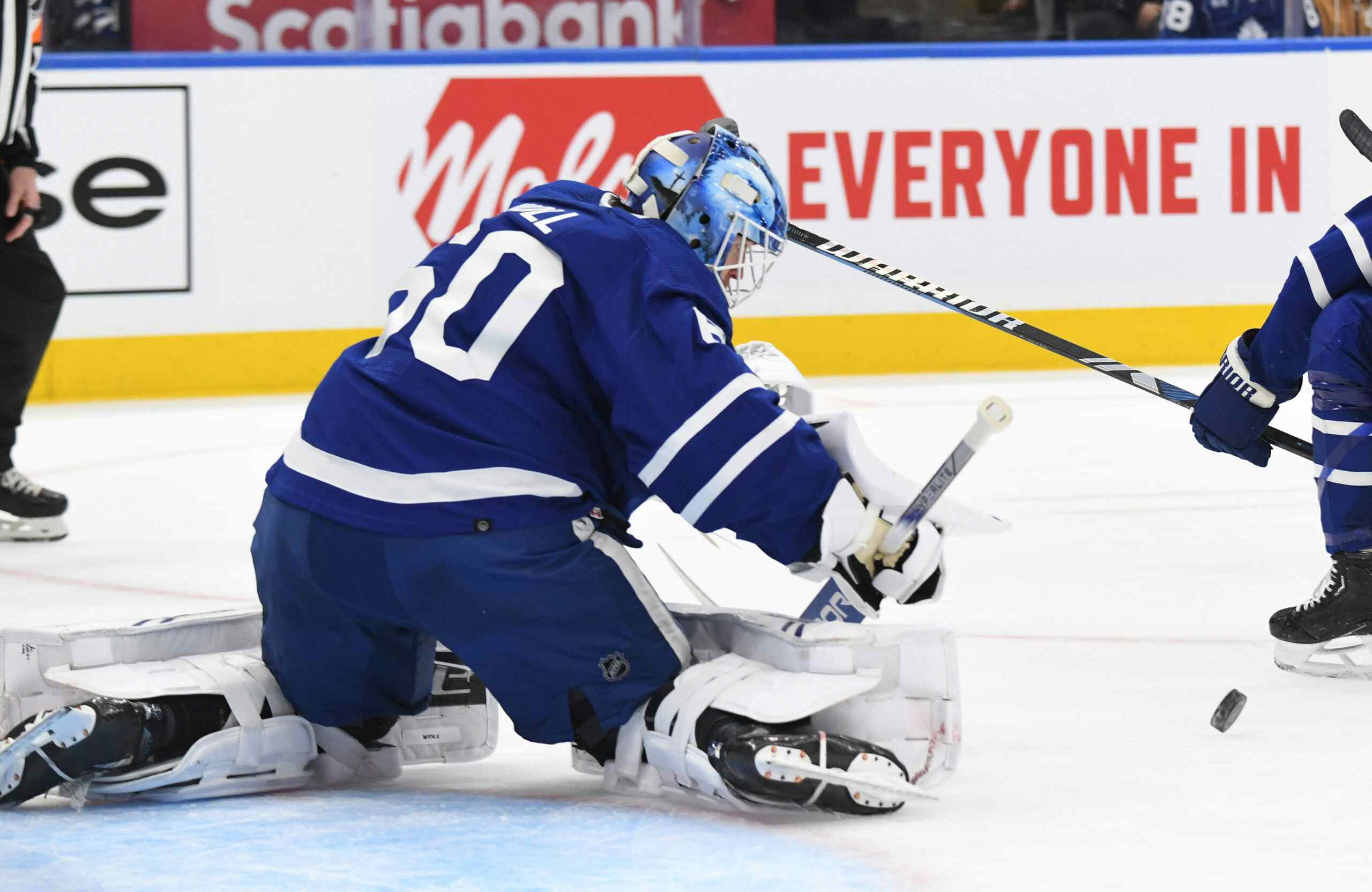Nazem Kadri trade rumours just won’t bloody die
By Cam Charron
10 years ago
Dave Nonis was on the radio talking about Nazem Kadri? Let me guess… did he say that Kadri is an important core piece of the Maple Leafs? That fans shouldn’t be too upset at his lack of production because the team took into consideration his unsustainable percentages a year ago? That Kadri’s play away from the puck has improved from 2013 to 2013-14?
Of course he didn’t. What Nonis said, per @Hope_Smoke via Sean Gentille at the Sporting News was “we’d be willing to trade Kadri.”
Gee, and Nonis might wonder why the blogosphere acts as if he were dumber than a sack of hammers, if he knew what a blogosphere was (or if he knew how to turn a computer on).
This is the full transcript:
“I think it’s easy to say that Kadri is struggling but he’s having a decent year. It’s not like he’s not putting up points. Last year he was producing against other teams’ 2nd and 3rd lines. This year he is playing against better players … Kadri and (Jake) Gardiner’s names are brought up quite a bit, so is (Morgan) Rielly’s. We’d be willing to trade Kadri. There’s a difference between willing to and trying to. If the right deal comes up we would do it.”
I’m not really certain that I buy Nonis’ claim for one that Kadri is playing against better players this season. His ice-time has slightly increased, but according to Extra Skater, Kadri ranks last on the Leafs in terms of quality of forwards faced (the metric essentially weights the amount of ice-time opponents play. A player who plays 20 minutes is more valuable than one who plays 5 minutes) and per the same website, Kadri’s 2013 TotTm% F QoC is identical to his 2014 value.
I don’t think competition is the thing, and it’s a very flimsy excuse. Randy Carlyle has shifted to a full-on power-on-power style this season, using Tyler Bozak against first lines and leaving Nazem Kadri or Jay McClement to the second and third lines, depending on the pace of the game. A year ago, Kadri would occasionally match up with the other team’s best lines if Carlyle lost a matchup on the road: Claude Julien would use Patrice Bergeron against him, for instance, because by way of numbers, he was the most dangerous Leaf.
For two, what is Nonis thinking even suggesting that Kadri is on the block? I agree with a point Steve made in his podcast yesterday: It doesn’t matter who the Leafs trade as long as they get a good return. That doesn’t give Nonis free reign to suggest that the Leafs would be willing to trade him. What kind of message does that send, during a year when Kadri is seeing his minutes eaten up by Jay McClement?
And, hey, as long as we’re discussing production, why is it always mentioned that Kadri has a scoring dip this year but not McClement? In 48 games last season, McClement scored 8 goals and 17 points. This year, he has one goal and five points in the same span of games, but more ice-time. Is the message “unless Kadri starts producing, we will give his minutes to a player that scores even less. That’ll learn him.”
It’s again, this bizarre crusade by Randy Carlyle and Dave Nonis against skilled players. They can win all the shootout games they want, but the reality is that this group conceived by Carlyle and Nonis fundamentally suck and are boring to watch. They’ve gotten to where they are in the standings today largely without the efforts of Dave Bolland and David Clarkson, the offseason’s two prized acquisitions, with the slack being picked up by Jonathan Bernier and a host of outlaws leftover from the Burke-Wilson era. The Leafs have been terrible to watch, and despite all the talent up front, can’t score goals and in response, they take their best players out of the lineup and put worse players in the lineup in front of them.
From a less quantifiable standpoint, and within the context of the Leafs as a team, Kadri is the most offensively gifted center in a center-starved organization. He’s also still quite young. In short, he’s the exact sort of player Toronto needs, and unless they move him as part of a deal for a blue-chip, better-than-him center, it’s tough to see how a move would make sense.
Maybe Nonis is expecting to light a fire under him, or increase his trade stock, but more than likely he wasn’t thinking. The Leafs probably don’t understand what made Kadri successful last year (a high on-ice Sh%) and their expectations for him this year was out of whack.
THE LESSONS OF JAMES VAN RIEMSDYK
Let’s use a test case on what happens when a team doesn’t understand a player on its roster.
For the Flyers, the swap ends van Riemsdyk’s tumultuous journey in Philadelphia, one that started with high expectations as the No. 2 overall draft pick in 2007 and never fully materialized. Instead, the 23-year-old offered just enough brief flashes of brilliance and glory to warrant a gaudy, 6-year, $25.5 million extension last summer. It was based purely on potential and not actually demonstrated consistency.
That word, “consistency” came up again in another column later that day, with a tongue-in-cheek nod to JvR’s consistency:
The flip side, as most pessimists point out, is that the Flyers will need to somehow find a way to replace the offense lost from van Riemsdyk.You know, since “JVR” was always such a consistent scorer.
The general feeling in Philadelphia was that van Riemsdyk struggled in his first season. He had an excellent second season, but failed to regain that form in his third year. Eric T., one of the smartest men in the world relating to hockey matters, wrote about van Riemsdyk in depth in February of 2012, after fans had soured on van Riemsdyk but before the Flyers traded him.
He concluded with:
James van Riemsdyk has improved quite a bit this year. Don’t let unrealistically high preseason hopes color your judgment; he’s shown a lot of progress this year and only a drop in shooting percentage luck is holding him back.
If you read a lot of sportswriters, you’ll often see the word “consistency”. From an individual standpoint, “consistency” is almost always a bad thing. A 5-goal scorer is, by nature, more consistent than a 30-goal scorer. You can always expect a 5-goal scorer to not score, and he does that with more consistency than the 30-goal scorer scores. In a sport like hockey where production is tied to randomness in a small sample, fans can get uppity about stretches where a player catches fire and then goes quiet.
Every good player in the league not named Sidney Crosby has been at some point blasted for “inconsistency” and it appears we’re very close to being down that same road with Kadri. Before the Leafs go out and Britta something, they should take into account van Riemsdyk’s PDO from Years 1-through-3 in Philadelphia:
| PDO | |
|---|---|
| 2010 | 98.9 |
| 2011 | 102.2 |
| 2012 | 97.8 |
I have a post explaining what PDO is here. Kadri’s PDO a year ago was 106.3, 3rd among regular forwards. This year he’s down to 99.2. If your expectations of Kadri involved him keeping those ridiculously-high percentages from a year ago, than your expectations of Kadri needed reconsidering.
SUM IT UP
- Some regression from Naz was to be expected. We’ve touched on this before.
- Don’t say anything stupid in the press about it, because you sound like the team that traded away James van Riemsdyk for Luke Schenn.
Recent articles from Cam Charron





